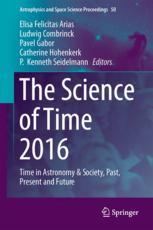

Most ebook files are in PDF format, so you can easily read them using various software such as Foxit Reader or directly on the Google Chrome browser.
Some ebook files are released by publishers in other formats such as .awz, .mobi, .epub, .fb2, etc. You may need to install specific software to read these formats on mobile/PC, such as Calibre.
Please read the tutorial at this link: https://ebookbell.com/faq
We offer FREE conversion to the popular formats you request; however, this may take some time. Therefore, right after payment, please email us, and we will try to provide the service as quickly as possible.
For some exceptional file formats or broken links (if any), please refrain from opening any disputes. Instead, email us first, and we will try to assist within a maximum of 6 hours.
EbookBell Team

5.0
68 reviewsThe uses of time in astronomy - from pointing telescopes, coordinating and processing observations, predicting ephemerides, cultures, religious practices, history, businesses, determining Earth orientation, analyzing time-series data and in many other ways - represent a broad sample of how time is used throughout human society and in space. Time and its reciprocal, frequency, is the most accurately measurable quantity and often an important path to the frontiers of science. But the future of timekeeping is changing with the development of optical frequency standards and the resulting challenges of distributing time at ever higher precision, with the possibility of timescales based on pulsars, and with the inclusion of higher-order relativistic effects. The definition of the second will likely be changed before the end of this decade, and its realization will increase in accuracy; the definition of the day is no longer obvious. The variability of the Earth's rotation presents challenges of understanding and prediction.
In this symposium speakers took a closer look at time in astronomy, other sciences, cultures, and business as a defining element of modern civilization. The symposium aimed to set the stage for future timekeeping standards, infrastructure, and engineering best practices for astronomers and the broader society. At the same time the program was cognizant of the rich history from Harrison's chronometer to today's atomic clocks and pulsar observations. The theoreticians and engineers of time were brought together with the educators and historians of science, enriching the understanding of time among both experts and the public.